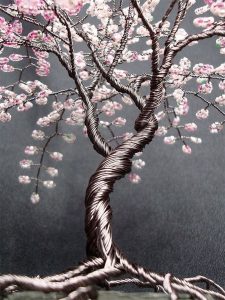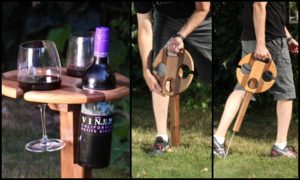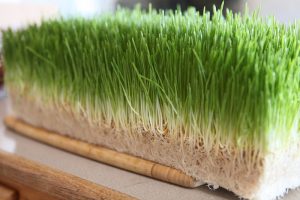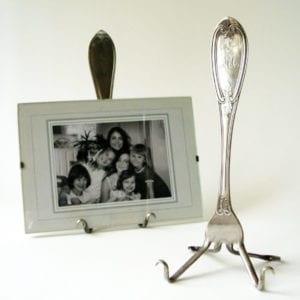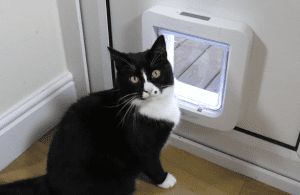Last Updated on July 26, 2024 by teamobn
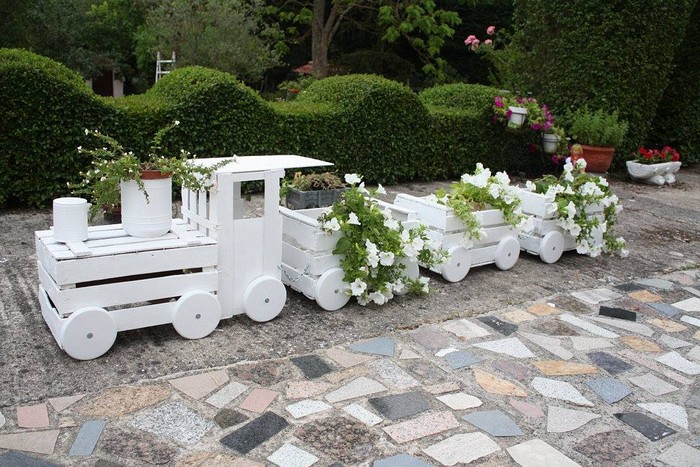
Want another fun garden idea? Why not make your own train planters out of old wooden crates? You can easily find crates at your local flea market or thrift store. With a little bit of elbow grease, you can turn these crates into beautiful planters for your home.
If you’ve got access to used wooden crates, repurposing them as train planters is a great project you can do with them. It will surely make your yard a happier place, and kids especially will love them! Plus, it’s a great way to upcycle and recycle old materials into something beautiful and useful. So get creative and have fun with this project!
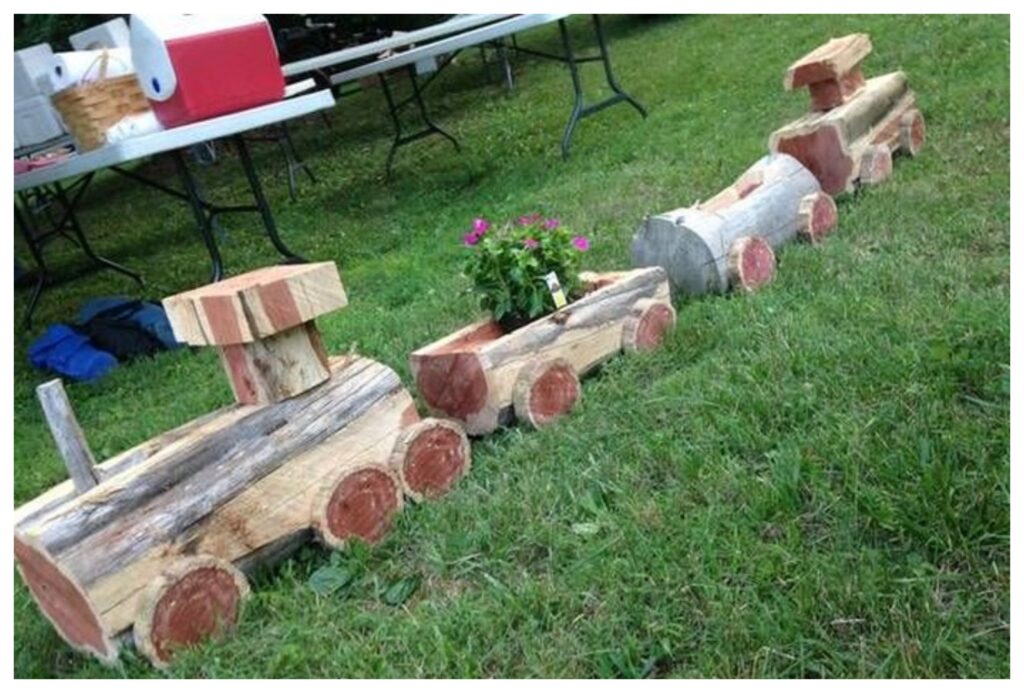
Like the idea of train planters but don’t know where to get wooden crates? We have other train planter ideas for you in our album below!
Contents
Building a Train Planter
Materials
- Old Crates
- Wooden Circles (or circular objects you can attach as wheels)
- Extra Plywood
- Chains
- White Paint/Spray Paint
- 2 Empty Containers (which will serve as a chimney)
- Wood Glue
- Plants
Tools
- Paint Brush
- Saw
- Drill
Instructions
Prepping your old wooden crates for upcycling is easy! Just give them a good cleaning, and you’re ready to get started. First, you can start attaching the wooden circles as wheels of the train, you can add every crate ‘wheels’.
After attaching the wheels, you can start sanding them down before connecting the crates together. Make sure to smooth out any rough edges, so you will have a smooth surface when you paint them.
Then you can paint your train planters in the colour of your choice or the one that best matches your outdoor decorations. You could even paint them in multiple colours to add a bit of fun and personality to your garden.
Now that the paint has dried, you can attach the crates together using chains. Make sure to measure the distance between each crate accurately, so that the chains are the correct length. This will ensure your train planter looks great and functions properly.
Finally, you can make the first wooden crate covered to resemble a train head. You can use empty plastic containers as chimneys. This can also be another planter you can plant on.
Your train planter is ready for planting. You can add quality potting soil and colourful plants that will make your outdoor area classy. Be sure to select plants that will thrive in the location you have chosen for your planter.
If you are unsure which plants to choose, ask a staff member at your local nursery for help selecting the perfect plants for your space. With a little care, your train planter will be a beautiful and stylish addition to your home.
If you don’t have access to old wooden crates, you can also use wine barrels and rounded logs for this particular train planter project. Wine barrels can be cut in half length-wise and make excellent planters for larger plants. Rounded logs can be used as well, although you’ll need to take care in cutting them so that they’re stable and won’t tip over.
Do you know anyone who will love this train planter project?
Click on any image to start the lightbox display. Use your Esc key to close the lightbox.![]()
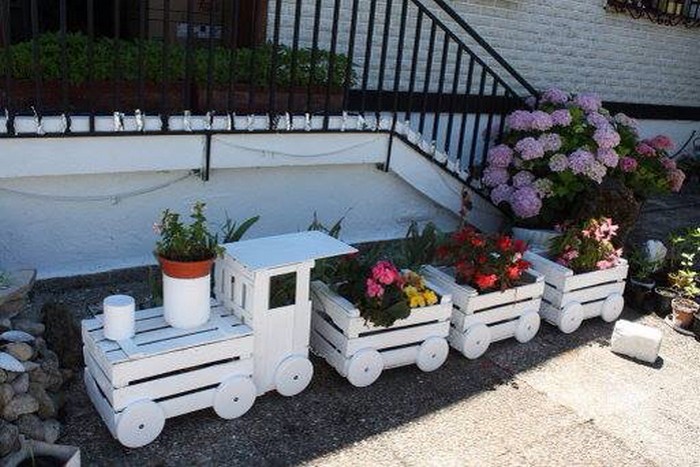
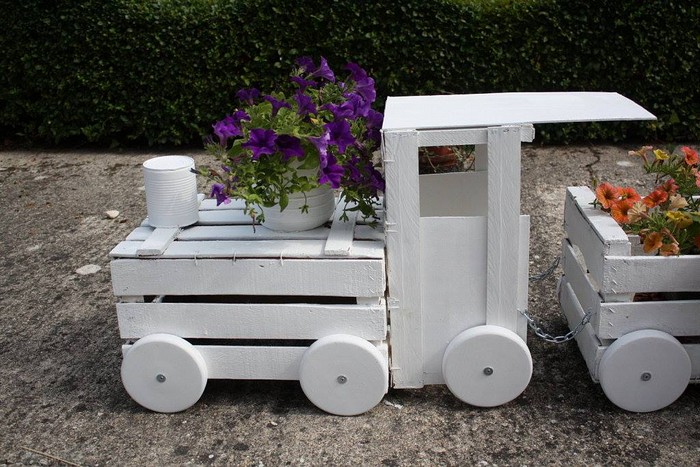
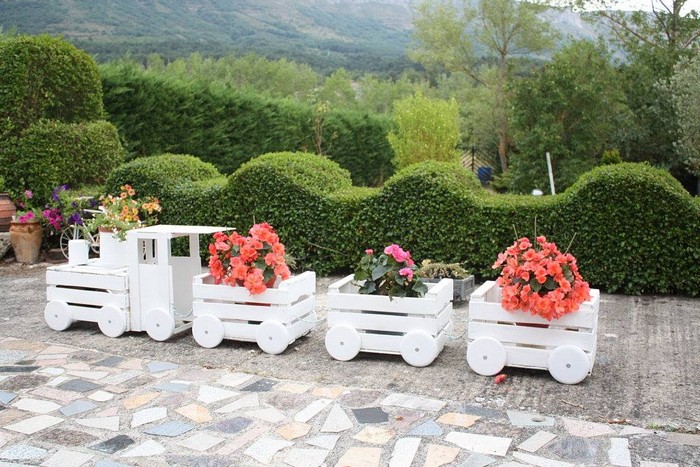

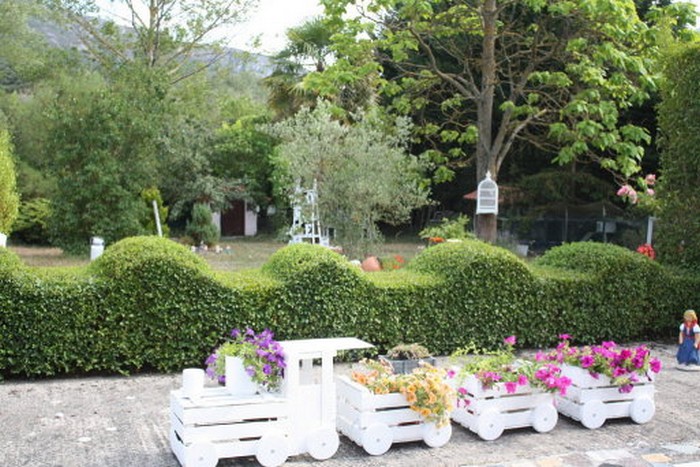
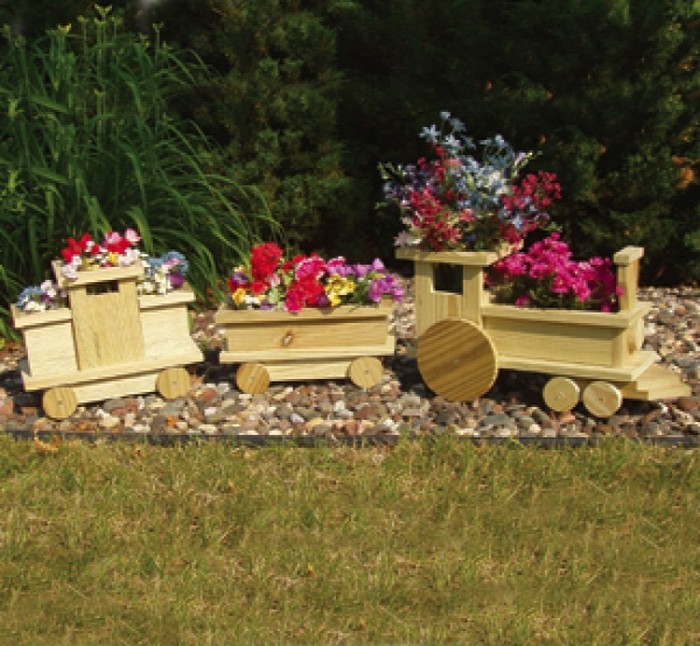
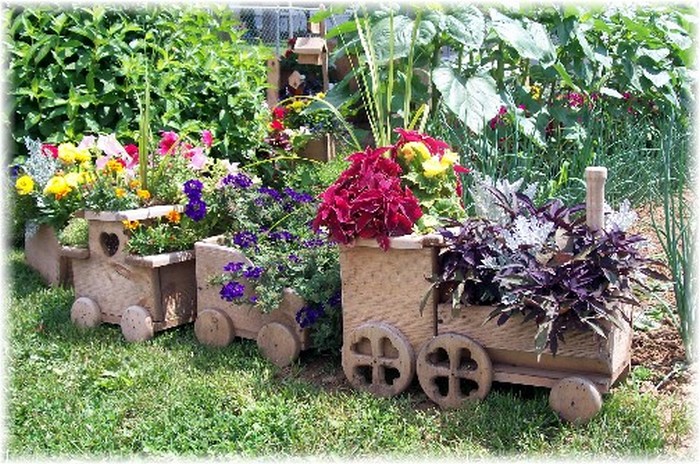
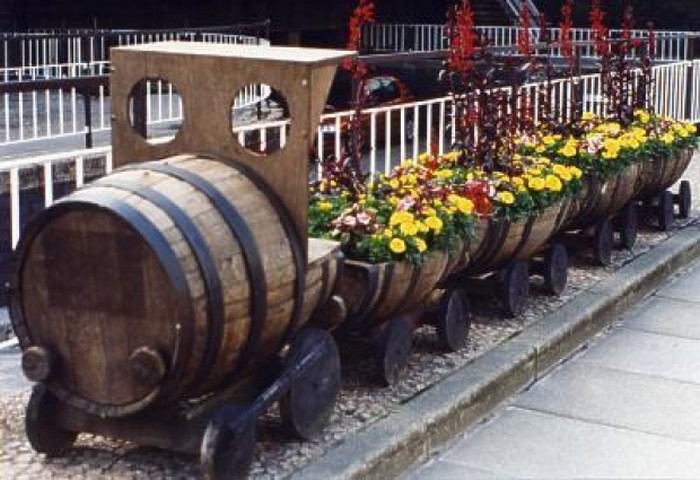
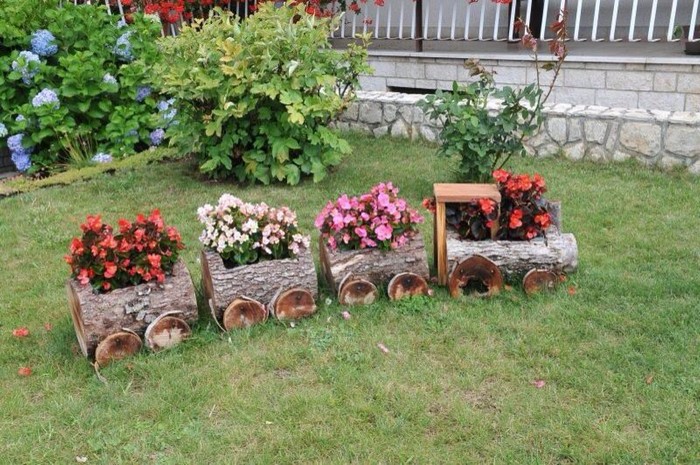
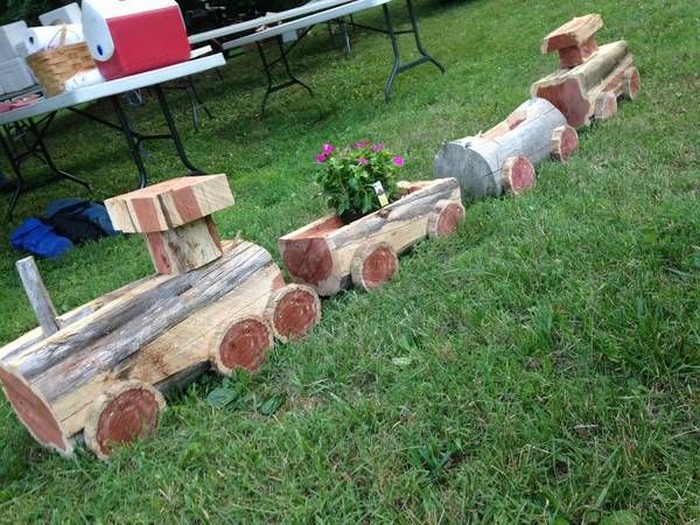
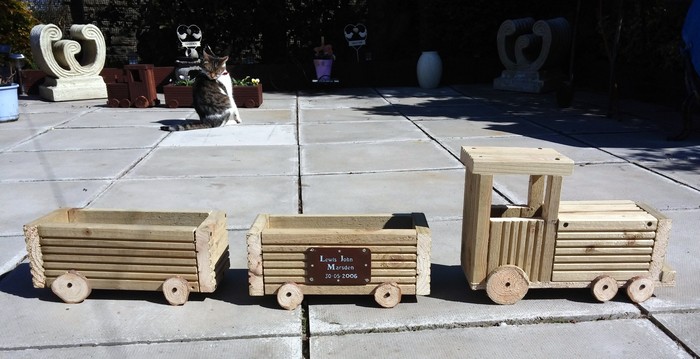
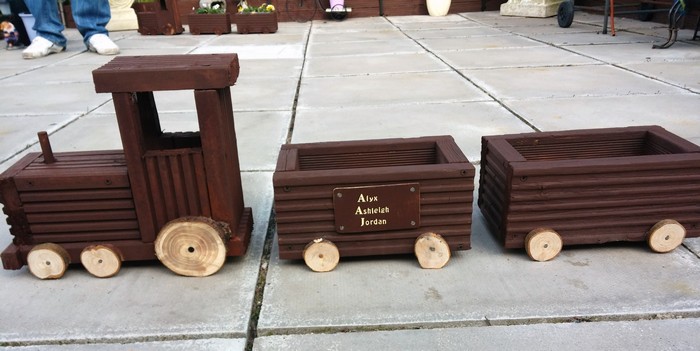
Not only is upcycling fun, but it’s also a great way to give your home a unique and personal touch. Plus, it’s a great way to save money on decorating. Who doesn’t love a good bargain?
So what are you waiting for? Get those crates cleaned up and start upcycling!
Thanks to Facilisimo for this great project. You can get step-by-step instructions here…
Design Variations
Train planters are versatile garden features that can be customized to suit any taste and style. Whether you’re aiming for a vintage look or something more contemporary, here are some creative design variations to consider for your project:
Old Country Style
Embrace the natural beauty of weathered wood by using reclaimed materials. For a more rustic aesthetic, consider incorporating aged metal parts like old railroad spikes or hinges. This not only enhances the visual appeal but also adds historical authenticity to your piece.
Urban Style
For a modern twist, use clean lines and uniform colors. Paint your crates in monochrome shades like black, white, or gray. Incorporate metal elements with a sleek finish, such as stainless steel wheels or aluminum accents, to give your planter a contemporary edge.
Vibrant and Colorful
Add a splash of color to your garden with brightly painted planters. Choose vivid colors that contrast beautifully with the greenery in your garden. For a fun and playful look, use stencils to paint numbers or floral patterns on the crates.
Industrial Look
To achieve an industrial look, mix materials like wood and metal. Use galvanized steel buckets for the compartments of your planter and attach them to a wooden frame with visible bolts and screws. This design not only looks striking but is also very durable.
Elegant Detailing
For a touch of elegance, focus on the finer details. Add ornamental ironwork as wheel designs or use polished brass handles. Incorporate a varnish finish to the wood to enhance its natural grain and add a luxurious sheen.
Themed Designs
Create planters that reflect specific themes, such as a fairy tale train or a wild west express. Use decorative elements relevant to your theme, such as castle-shaped windows for a fairy tale train or rustic barn wood and cowboy motifs for a wild west theme.
These design variations offer numerous possibilities for personalizing your garden’s train planter, making it a unique and captivating addition to your outdoor space.
Maintenance and Care Tips
Maintaining your train planter not only ensures it looks great year-round but also helps extend its lifespan, making it a lasting feature in your garden. Proper care involves regular cleaning, protection from the elements, and timely repairs. Here’s a comprehensive guide to keeping your train planter in pristine condition:
Regular Cleaning
Keeping your planter clean is crucial to prevent mold and mildew buildup, especially in damp climates. Monthly cleaning with soapy water and a soft brush will remove dirt and debris. For wooden planters, use a mild detergent to avoid stripping any protective finishes. Rinse thoroughly with a hose and allow it to dry completely before replacing the plants.
Weatherproofing
To protect your planter from weathering, apply a water-resistant sealant at least once a year. This is particularly important for wooden planters, which are prone to rot and warping when exposed to moisture. Choose a sealant appropriate for the material of your planter, and apply it according to the manufacturer’s instructions. For metal parts, consider using a rust inhibitor to prevent corrosion.
Pest and Weed Control
Regularly inspect your planter for signs of pests and weeds. Remove weeds by hand to avoid the use of harsh chemicals that can damage the planter’s materials. If pests are a problem, use organic pest control methods or consult with a garden center to find appropriate treatments that are safe for use around your plants.
Paint and Finish Touch-Ups
If your planter is painted or has a specific finish, check annually for chips or fading. Touch up the paint or finish as needed to maintain the appearance and protect the material underneath. This not only keeps your planter looking new but also adds an extra layer of protection against the elements.
Structural Integrity Checks
Inspect the structural integrity of your planter regularly, especially if it is constructed with multiple sections or movable parts. Tighten any loose screws and replace broken or rotting pieces. Ensuring your planter is structurally sound prevents accidents and increases its functional lifespan.
Soil Maintenance
Change the soil in your planter at least once a year to prevent nutrient depletion and promote healthy plant growth. Remove old soil, clean the interior of the planter, and replace it with fresh, high-quality potting mix. This is also a good time to inspect the inside of the planter for any hidden issues like root rot or insect infestations.
Seasonal Adjustments
Adapt your maintenance routine to the seasons. In winter, consider moving your planter to a sheltered location if it is not frost-proof. During hot summers, ensure that your plants are adequately watered and that the planter’s material does not become too hot, which can damage both the plants and the container.
Mulching
Apply a layer of mulch to the top of the soil in your planter. This helps retain moisture, suppress weeds, and keep the soil temperature stable. Choose a mulch that complements the aesthetic of your planter and replace it annually to keep your setup looking fresh.
Proper Plant Selection
Choosing the right plants for your planter is crucial for minimal maintenance. Opt for species that are well-suited to the size of the planter and the local climate. This reduces the need for frequent watering and pruning and helps prevent overgrowth that can strain the structure of your planter.
Following these maintenance and care tips will ensure that your train planter remains a beautiful and vibrant part of your garden for years to come. Regular attention and a little effort go a long way in preserving this charming garden feature.
Conclusion
Building a train planter is a rewarding DIY project that transforms old materials into a stunning garden feature. Through creative design and careful assembly, you can customize the planter to fit the style and functionality of your outdoor space. Once completed, the train planter serves not only as a decorative element but also as a testament to sustainable gardening practices.

